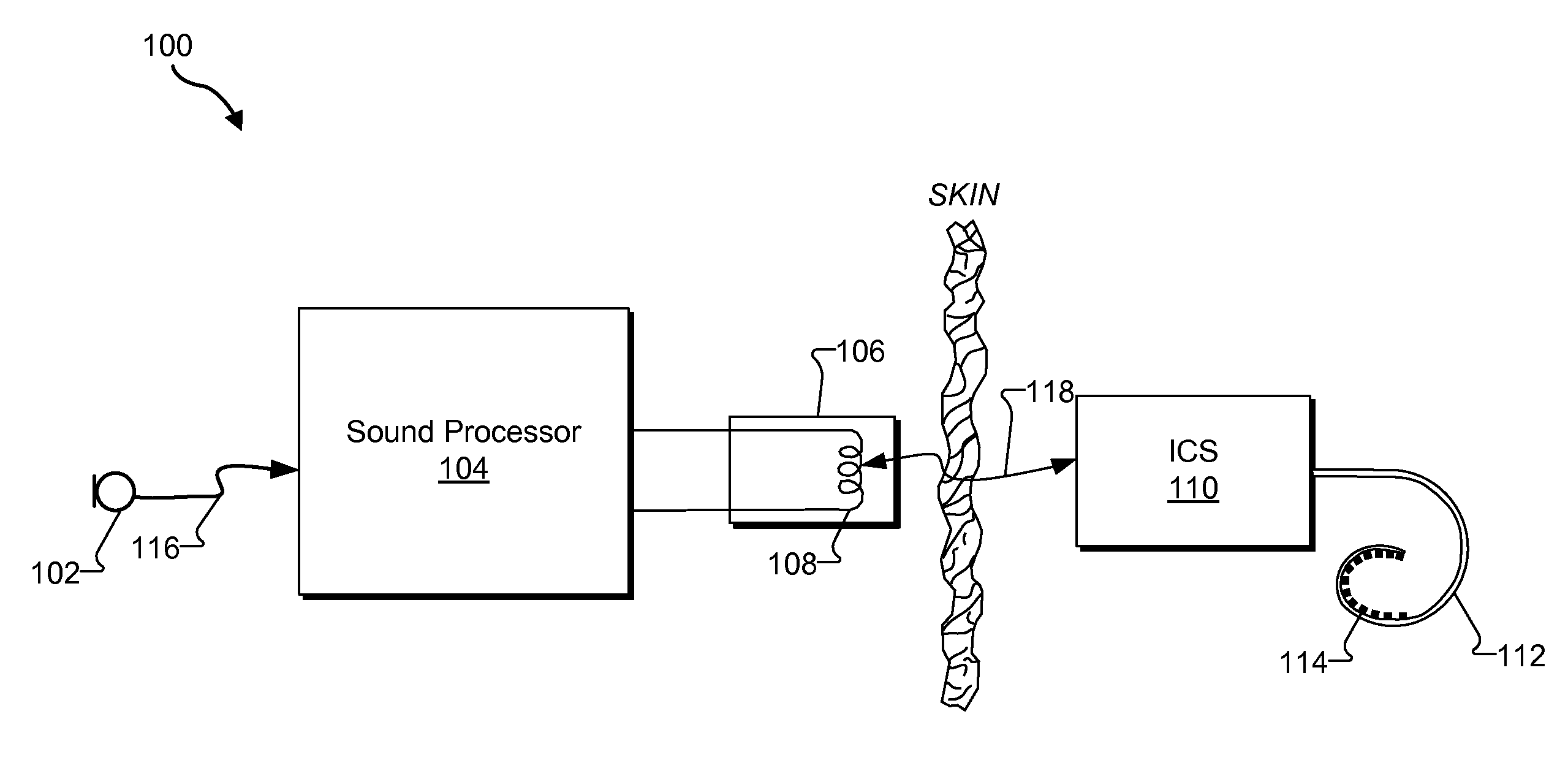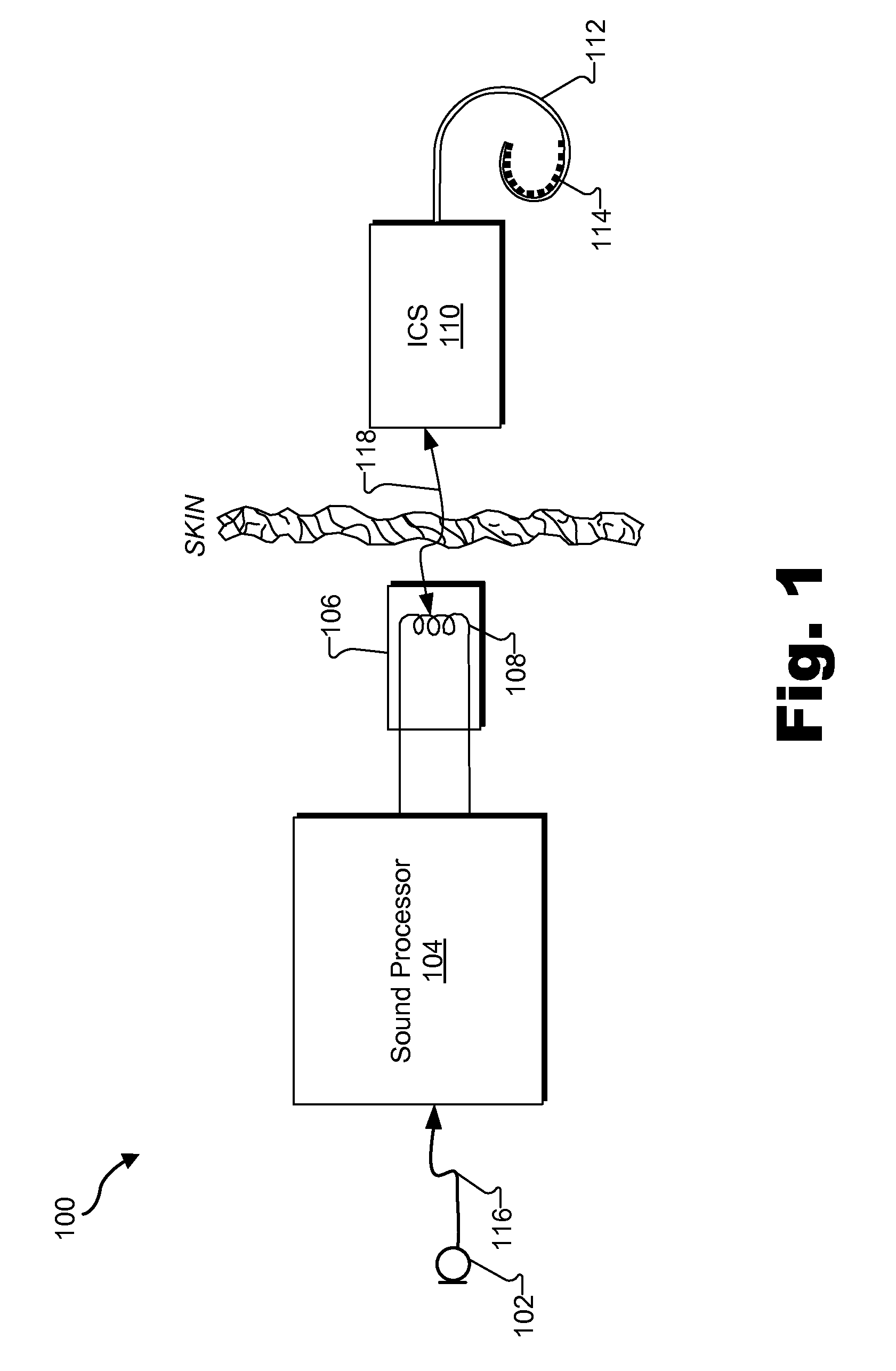Methods and Systems for Fitting a Sound Processor to a Patient Using a Plurality of Pre-Loaded Sound Processing Programs
a sound processor and pre-loaded technology, applied in the field of methods and systems for fitting a sound processor to a patient, can solve the problems of conductive hearing loss, impeded sound pathways, and impeded normal mechanical pathways for sound to reach the hair cells in the cochlea
- Summary
- Abstract
- Description
- Claims
- Application Information
AI Technical Summary
Benefits of technology
Problems solved by technology
Method used
Image
Examples
Embodiment Construction
[0020]Methods and systems for fitting a sound processor to a patient are described herein. As described in more detail below, a fitting subsystem may be configured to pre-load program data representative of a plurality of sound processing programs onto the sound processor during a data transfer session. After completion of the data transfer session, the fitting subsystem may selectively use one or more of the pre-loaded sound processing programs to fit the sound processor to the patient.
[0021]As used herein, the term “sound processing program” refers to any program that is executable by a sound processor included in a cochlear implant system. Hence, a sound processing program may specify a particular mode in which the sound processor is to operate. For example, a sound processing program may define a set of control parameters selected to optimize a listening experience of a cochlear implant patient in a particular listening environment (e.g., a relatively quiet room, a noisy restaur...
PUM
 Login to View More
Login to View More Abstract
Description
Claims
Application Information
 Login to View More
Login to View More - R&D
- Intellectual Property
- Life Sciences
- Materials
- Tech Scout
- Unparalleled Data Quality
- Higher Quality Content
- 60% Fewer Hallucinations
Browse by: Latest US Patents, China's latest patents, Technical Efficacy Thesaurus, Application Domain, Technology Topic, Popular Technical Reports.
© 2025 PatSnap. All rights reserved.Legal|Privacy policy|Modern Slavery Act Transparency Statement|Sitemap|About US| Contact US: help@patsnap.com



